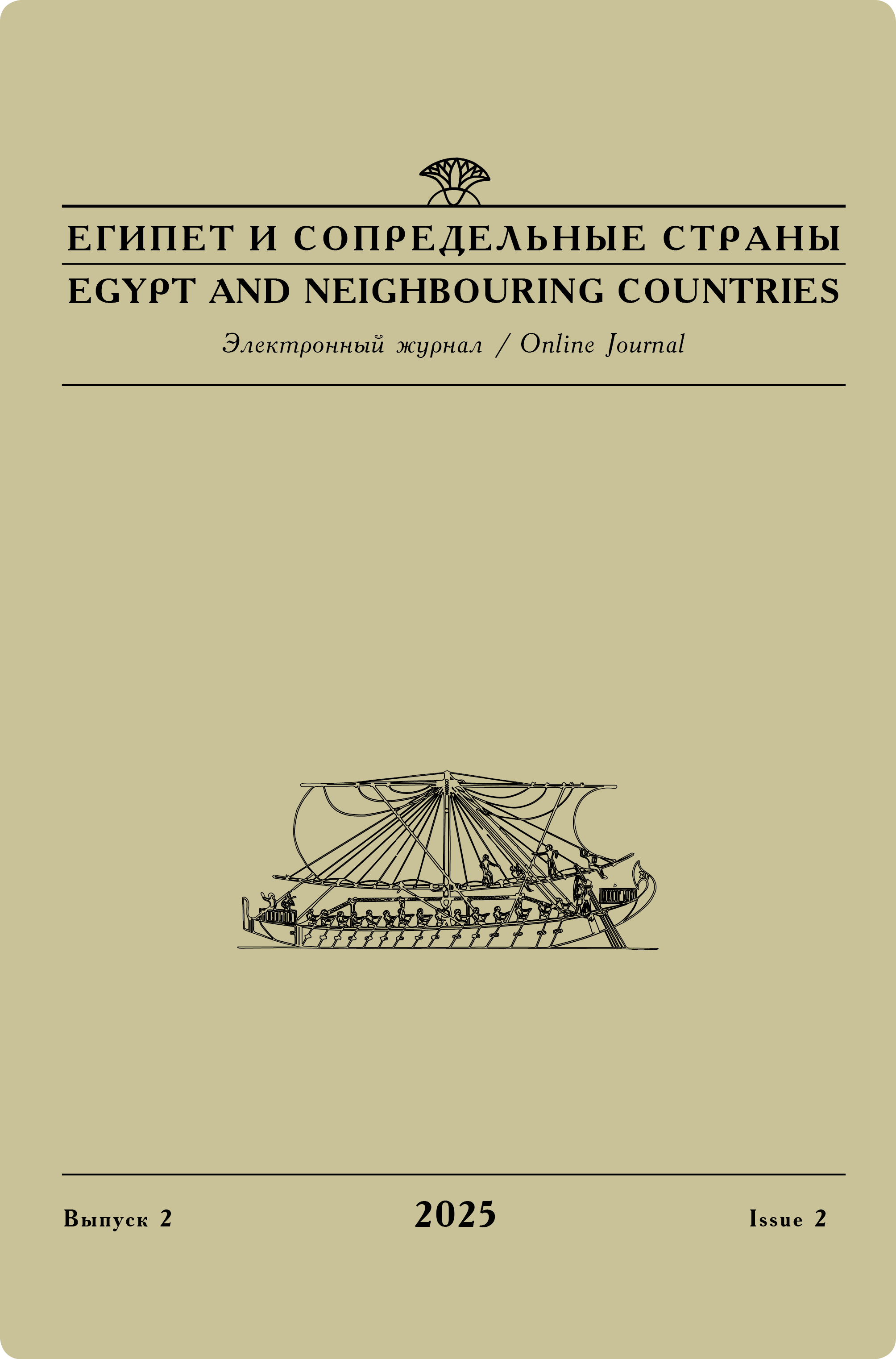Issue 1, 2021
S. V. Ivanov
Anthropomorphic boards from the necropolis of Deir el-Banat [Antropomorfnye doski iz pogrebenii nekropolia Deir-el'-Banat]
The paper presents anthropomorphic boards coming from burials of the necropolis of Deir el-Banat. These objects are pieces of wood, mainly of date-palm trunks. The upper part of boards is rounded, it is separated from the main part with cuts that form a kind of ‘neck’ and ‘shoulders’; at the lower (‘feet’) part the board gets narrow comparing to the upper (‘torso’) segment. Both sides of boards are smoothed, no sign of decoration is present. These boards were used as a support, on which a dead body was laid before burial without a coffin in a pit grave. Corpses were wrapped in a few bandages, then they were attached to boards and wrapped again in several layers of funerary shrouds. Though at Deir el-Banat the earliest cases of burials with anthropomorphic boards date to the 4th century AD, on other sites these objects were in use since the end of the 1st century BC. The boards dated to the Roman period are kept in the collections of the State Hermitage (Saint-Petersburg) and the British Museum (London). These pieces are decorated with images and texts that were necessary to provide safety and well-being of the dead in the afterlife. Thus, the boards became a kind of substitute for coffins that in previous period were a usual medium for such decoration. With the spread of Christianity the Ancient Egyptian tradition of magic protection for the dead bodies was generally abandoned. However mummy-boards (though undecorated) were still in use for a significantly long period.
Keywords:
Fayoum, Deir el-Banat, Greco-Roman period, Byzantine period, funerary customs, anthropomorphic boards.
Original language — Russian.
DOI: 10.24412/2686-9276-2021-00004.
Referring: Ivanov S. V. Anthropomorphic boards from the necropolis of Deir el-Banat [in Russian] // Egypt and neighbouring countries 1 (2021): 44–57. DOI: 10.24412/2686-9276-2021-00004.
Read full article




